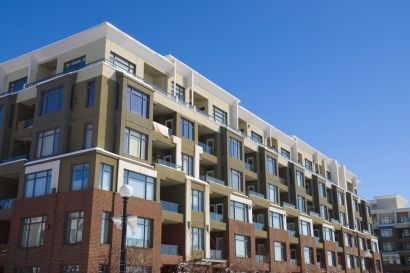Aussies turn to apartment living

More Australians are finding their dream home is an apartment rather than a house, according to research released this week by Bankwest.
The Bankwest Housing Density Report reveals that two in five (38 per cent) Australian home approvals over the past 12 months were for medium density* dwellings, compared to fewer than one in three (31 per cent) only five years ago.
Bankwest Retail Chief Executive Vittoria Shortt said that people are increasingly choosing medium density housing as a more affordable alternative to the more expensive traditional house and garden in the suburbs.
Across the country, the number of medium density housing approvals has increased by 18 per cent over the last five years, in comparison to stand-alone home approvals, which fell by some 16 per cent.
“The popularity of medium density housing will likely be maintained as older Australians continue downsizing to more manageable self-contained units and first time buyers look to medium density dwellings as a cost effective option,” Ms Shortt said.
This supports the findings of the Bankwest First Time Buyer Deposit Report, released in December 2012, which found that units are a significantly more affordable option for first time buyers wanting to live in Australia’s capital cities.
On average, it takes 3.3 years for a first time buyer couple to save for a unit deposit, whereas it would take them nearly eleven months longer to save for a house deposit (4.2 years).
The Bankwest Housing Density Report found that during the past 12 months an astonishing 87 per cent of all medium density dwelling approvals across Australia were in capital cities, with only 13 per cent of the national total in regional areas. This is a considerable jump up from 69 per cent in 2007, reflecting the particularly large increases seen in Melbourne and Sydney over this period.
Inner city areas face the highest demand for units, townhouses and semi-detached houses. Since 2007, a staggering 97 per cent of housing approvals in Inner Melbourne were for medium density dwellings. Figures for Inner Sydney and Inner Brisbane follow closely behind at 95 per cent.
“The convenience of an inner city lifestyle is driving demand for medium density housing in centralised areas”, MS Shortt said.
“Young city professionals are shunning the traditional homeowner dream in favour of lower overheads and a shorter commute to work.”
The report also found that the share of medium density housing in seven of Australia’s eight capital cities has increased since 2007.
Perth is the exception, as the only capital to see a fall in its share of medium density housing approvals over the last year (20 per cent) compared to the level of approvals over the last five years (23 per cent).
“Higher than average wages and a sprawling city mean that Perth’s residents aren’t facing exactly the same space and affordability issues as those on the East Coast,” said Ms Shortt.
Outside of Australia’s capital cities, areas with the highest proportion of medium density housing approvals are predominantly found in tourist and mining areas. Queensland’s famous Gold Coast East tourist hub topped the list with 87 per cent of dwelling approvals over the last five years being for medium density housing.
*medium density in this context refers to units, townhouses and semi-detached houses